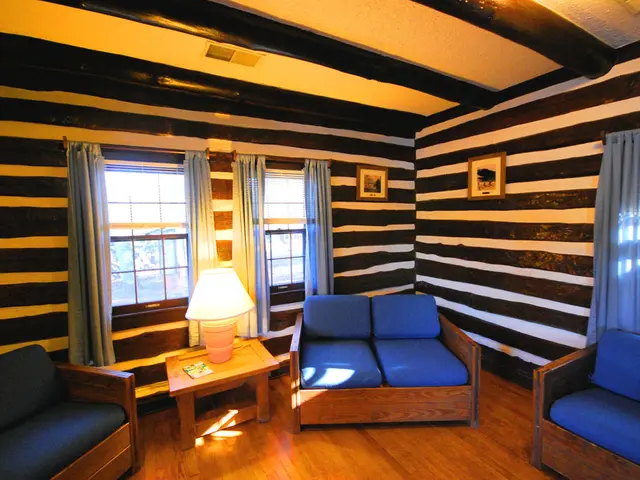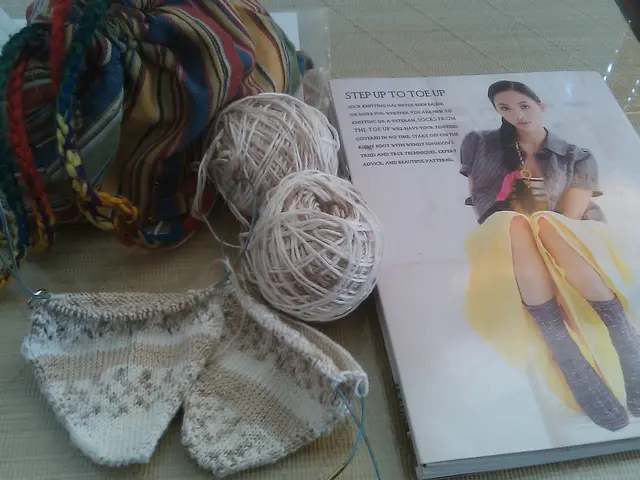Essential Components for a Comfortable and Simplistic Living Environment
======================================================================================
In the quest for a minimalist living space, the key lies in creating a functional and personalised environment that not only looks good but also feels good. This article will delve into the essential principles for crafting a minimalist space that is supportive, functional, and enhances well-being.
The focus is on achieving a balance between aesthetics and support in a minimalist journey. By prioritising function and purpose, we can ensure that every item in our space serves a clear, practical purpose, avoiding clutter and maintaining usability. Every piece should have both aesthetic and functional value.
Adopting a "less is more" approach with simplicity and clarity is another essential principle. Using clean lines, simple shapes, and avoiding unnecessary ornaments allows architectural elements to stand out, while keeping furnishings minimal and functional.
Curating quality over quantity is also crucial. Selecting durable, well-made items that last adds meaningful aesthetic appeal, rather than accumulating many possessions. A neutral base palette with warm, natural textures can create a welcoming, tactile environment. Employ whites, greys, earth tones, and incorporate natural materials like wood, stone, and metal.
Organized storage and clear zones are essential for maintaining order and reducing stress. Make sure storage solutions facilitate visibility and easy access to belongings, with designated zones to keep items categorized.
Balancing minimalism with comfort is equally important. Add warm lighting, comfortable seating, and limited artwork or personal touches to avoid a stark, uninviting atmosphere. Maintaining visual calm and uncluttered surfaces is key. Keep wall art to a minimum, use floating or wall-mounted elements to open space, and conceal clutter with efficient storage for a clean, serene effect.
Together, these principles ensure a minimalist space that not only looks streamlined and elegant but also supports day-to-day living, promotes organization, and fosters tranquility and well-being.
A supportive minimalist space goes beyond simplicity to craft an environment that supports the individual holistically. It is about reducing possessions and creating a space that supports and uplifts the individual. The elements discussed are adaptable to any room in the house, providing insights into must-have elements to create a minimalist space that resonates with personal style and functional requirements.
The goal of a minimalist living space is to align with the individual's aesthetic and enhance their well-being. Today's discussion will cover must-have elements for a supportive minimalist space. By following these principles, you can create a minimalist space that radiates a supportive and positive vibe in any room of your house.
- In a blog post discussing minimalist interior-design, the importance of intentionally creating a space that is both functional and personal is emphasized, ensuring a fresh yet comfortable living environment.
- Adopting the principle of selecting items with both aesthetic and functional value, one can curate quality pieces that add meaningful appeal while avoiding clutter and maintaining usability.
- Curating a homespace that reflects minimalism includes adopting a "less is more" approach, using clean lines, simple shapes, and quality materials to create a serene and inviting lifestyle.
- The minimalist home-and-garden should prioritize organizing storage and zones, promoting visual clarity, reducing stress, and maintaining order.
- To ensure a well-rounded minimalist living space, complement simplicity with comfort, incorporating warm lighting, comfortable seating, and personal touches to ward off starkness.
- By adhering to these minimalist principles, a supportive space can be crafted that resonates with personal style, fosters tranquility, and improves family life in any room.
- In the realm of minimalist podcasts or courses, the focus on creating a lifestyle that aligns with individual aesthetics, saves space, enhances well-being, and fortifies personal connections is explored.




